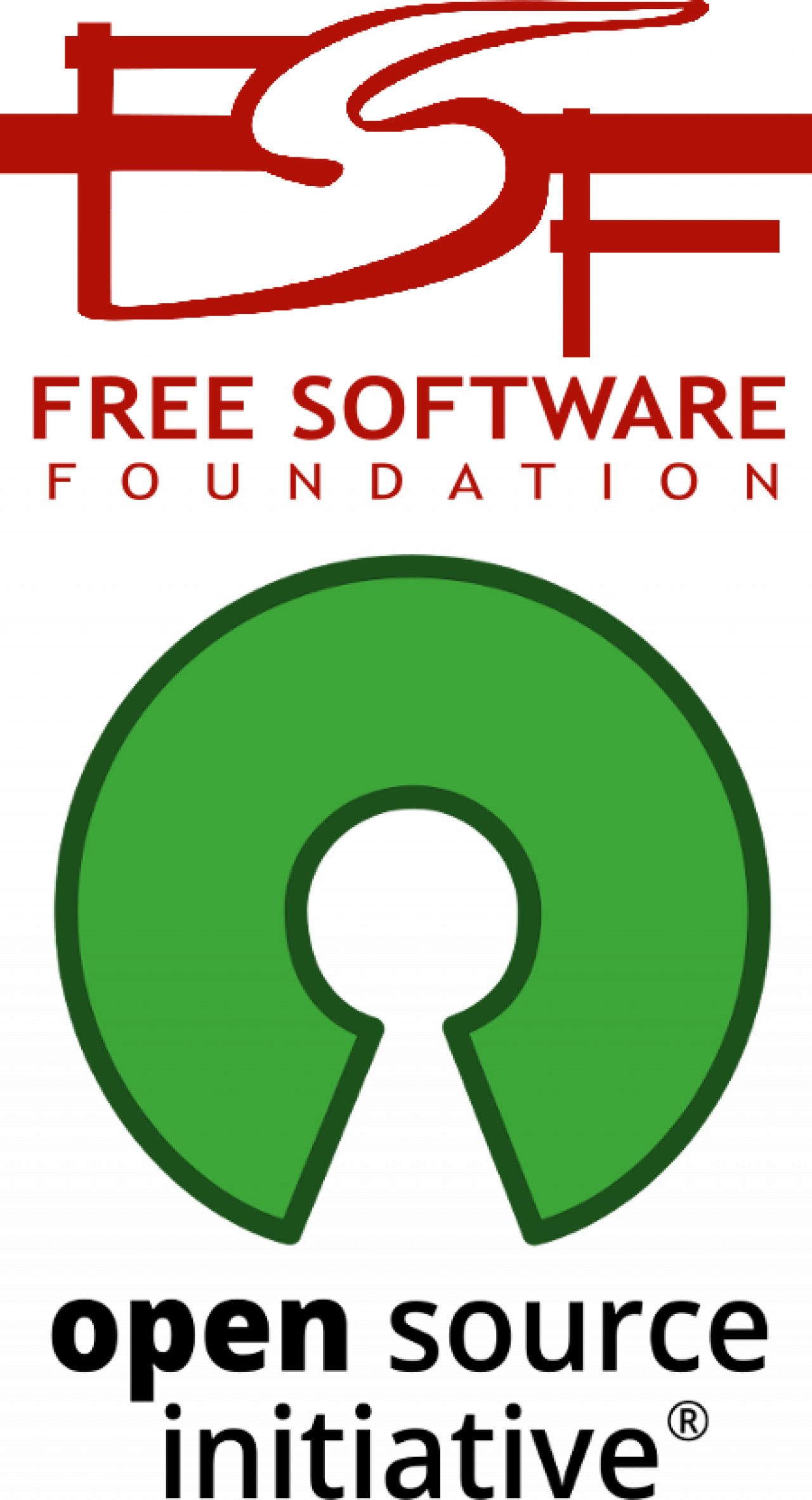This blog examines how companies and individuals make money and/or enjoy economies by using open source software (OSS). The blog highlights multiple business and technical strategies for monetizing open source in general, and examines the commercial role of OpenTAP and opportunity for the platform in the test automation ecosystem.
Free and Open Source Software
The term Free and Open Source Software (FOSS) comprises software licensed for (re)distribution under a license that allows users the freedom to run, copy, distribute, study, change and improve the software [gnu.org]. These freedoms are enumerated in The Free Software Definition by the Free Software Foundation (FSF). These core freedoms are further elaborated in the Open Source Definition by the Open Source Initiative (OSI).
Each of these organizations plays an important role in the open source ecosystem.

The FSF (together with the Software Freedom Law Center) invests resources in license compliance by recipients and (re)distributors of FOSS, as well as education, trademark counseling, patent defense, and related legal activities.
The OSI maintains the list of approved licenses, vets proposed new licenses, and engages in other activities around trademarks.
What is the difference, then, between the Free Software and Open Source? Richard Stallman, the founder of the FSF, provides an apt comparison: "The two terms describe almost the same category of software, but they stand for views based on fundamentally different values. Open source is a development methodology; free software is a social movement."
Free Beer and Free Speech

Because open source and free software emphasize the unconstrained circulation of source code, newcomers to FOSS tend to interpret "free" to mean "without compensation", as in Free Beer. And indeed, all approved FOSS licenses and projects that employ those licenses take pains to distribute source code directly to all comers. But source code is not the same as usable software, which we expect to see accompanied by working binaries, technical support, regular updates and other niceties. Indeed, many FOSS licenses explicitly state that the governed software is supplied as is and without warranty.
Mature FOSS project communities usually do provide working binaries, support, bug fixes, etc. but on a best-effort basis, leaving ample opportunities for parties to offer commercial versions of the same software and services around the code bases, and to monetize it in other ways. The software is still free, but that freedom is more akin to freedom of speech.
Proven Business Tactics Around FOSS
Free and Open Source Software provide entrepreneurs a rich and broad set of opportunities for offering commercial products and services based upon project code:
Use OSS to deliver a service
Sell services, support, information for/about OSS
Publish information about OSS to garner advertising revenues
Sell hardware for/with OSS
Host an exchange for the product of an OSS tool or platform
Open source/commercial dual licensing
Offer OSS with commercial upgrades
Integrate, package and distribute solutions of OSS
Achieve strategic objectives, rather than direct revenue
Disintermediation of a competitor
and many others.
Following is a four-way paradigm for describing business models that involve FOSS. Note that the four core strategies are not mutually exclusive - some motives and models encompass elements of multiple strategies.

Building Open Source Software
This model entails the creation of open source software as a company's product, e.g., creating a platform distribution. Commercially-supported versions of Apache server, Linux, BSD, OpenStack, and Kubernetes are prime examples of this model, as are the shrink-wrapped versions of OpenTAP offered by Keysight and OpenTAP ecosystem participants.
Building FOSS (or any other software) can be an expensive proposition - by some estimates (using the Constructive Cost Model, a.k.a. CoCoMo), development of the Linux platform represents a multi-billion dollar investment. The decision by a company to create an open source code base, or more commonly to release an existing code base as FOSS, represents a complementary business objective: to sell support for that code, to support hardware and make it more interoperable, to energize an ecosystem, to establish a de facto standard, or to disintermediate / devalue a proprietary solution offered by a competitor.
Building with Open Source Software
This strategy involves adding value to existing FOSS with software, services and/or hardware. The best-known instance of this model is often called "open core", but there are many variations on this strategy
Services: web and cloud hosting, built on platforms like Linux, Apache server, NGINX, OpenStack, Kubernetes and others
Embedded FOSS: Intelligent devices, mobile/wireless and IoT built with embedded Linux, BSD, Android and open source RTOSes; a very apt example lies in building test equipment with OpenTAP
Commercial Applications: almost all commercial software today contains dependencies upon FOSS, in the form of libraries and plugins, up to and including entire subsystems and full-blown applications with very "thin" commercial value-add.
Tools: many popular development tools and languages are themselves open source software: GNU C/C++, GO, Python, PHP, Ruby and Rust; Atom, Eclipse, Netbeans et al.; Jenkins, GIT, GitHub, GitLab, etc.
Building with open source commonly allows organizations to save resources (budgets, head-count, etc.) vs. direct commercialization. Basing a product or a service on an existing open source software stack accelerates time-to-market and saves engineering costs vs. building a solution in-house or paying for a proprietary, off-the-shelf solution with comparable functionality.
Building for Open Source Software
Companies elaborating this strategy seek to provide products and services to users and creators of open source software to address the unique properties of FOSS and requirements of working with it. Examples include
Hosting repositories and other collections of open source, e.g., GitHub and GitLab
Developing / hosting tools to provide metadata about open source, e.g., Bitergia
Composition Analysis to catalog the licenses that apply to open source projects, the security vulnerabilities that impact those projects, and dependencies across projects. Suppliers in this category include software composition analysis tools vendors Black Duck, FOSSA, FOSSID, Mend (formerly White Source), Palamida (now ALM), and Sonatype.
Building on Open Source Software
Lastly, many companies build internal apps and materially run operations on open source software.
Desktop productivity software, development tools, file and email servers
File servers and other data center software
Web sites, e-commerce platform
Public and private clouds
Enterprise data bases and big data platforms
Open source CRM, ERP, accounting, project management and collaboration software
Monetizing OpenTAP
OpenTAP began life as an internal project at Keysight and Keysight customer Nokia The motives for releasing OpenTAP as open source software were manyfold:
Consolidate versions of a platform already in use internally
Promote creation of a de facto standard for test automation
Enhance interoperability among instrumentation, DUTs and other T&M tools within Keysight and across the T&M ecosystem
Keysight monetizes OpenTAP by building with the platform - there are dozens of shipping Keysight products that embed the test automation platform, and dozens more that interoperate with instances of OpenTAP at customer sites enabled by OpenTAP plugins. Keysight also offers fully-supported shrink-wrap versions of OpenTAP as part of the PathWave Test Automation product line.
Nokia, for its part, builds on OpenTAP, standardizing on the test automation platform in its manufacturing and QA/QC operations.
How Can You Monetize OpenTAP?
If you are reading this blog, you are probably already build on OpenTAP in your product test lab and/or manufacturing line. OpenTAP helps your team save time and resources by simplifying and streamlining your testing processes.
But how else can you monetize OpenTAP
Plugin Creation - OpenTAP plugins exist to extend the functionality of the OpenTAP platform. Plugins enable interoperability with new instrumentation and DUTs, development tools and new types of results reporting. Members of the OpenTAP ecosystem can create plugins to support their COTS hardware (like Pickering Labs and FOSSASIA), and custom instruments, extensions to enable programming in other languages (Python), and myriad other plugin applications. You can monetize plugins by providing commercial versions of those plugins or including plugins in other commercial offerings.
Legacy Support - Not only can plugins support new test equipment, they can also support legacy instruments and testing equipment from other vendors. You and your team can monetize OpenTAP by extending the lifetimes of equipment you already own and/or interfacing to COTS instrumentation that provides the best value for your budgets.
Tool Creation - the OpenTAP project includes a variety of tools to help you create test plans and create custom results reports. The open nature of OpenTAP and the plugin interface enables end-users and third-parties to create new tools for these same purposes and/or to integrate other tools into an OpenTAP workflow (and vice-versa).
Conclusion
Free and Open Source Software, contrary to many initial assumptions, offers a gamut of possibilities for creating and sustaining new businesses and enhancing existing ones. For the past decade, existing firms, startups and and the VCs that invest in them have acknowledged and validated businesses and business models that involve FOSS, with overwhelmingly positive outcomes.
Join your peers in the OpenTAP ecosystem in saving time and resources by leveraging OpenTAP, and creating new revenue streams with this dynamic open source test automation platform.
